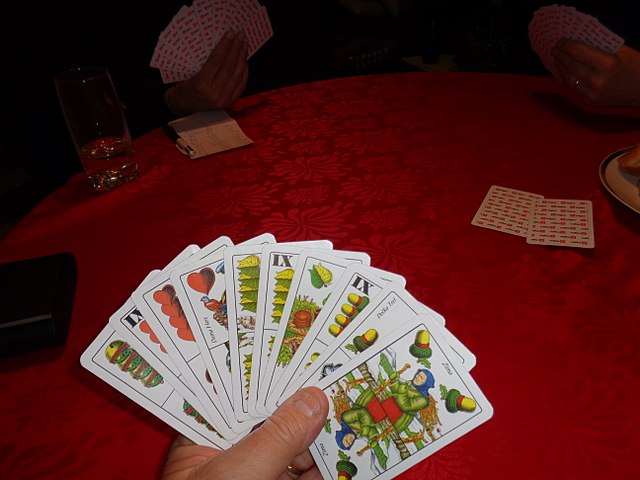Bruus, formerly Brausebart or Brusbart, is a north German card game for four players in two teams of two. It was once highly popular but has since died out except for a few pockets in the state of Schleswig-Holstein. As Brusbart, it was the ancestor of a family of similar games in northern Europe, including Swedish Bräus and Danish Brus which are still played today. Bruus features 'daring and tormenting' which has been said to give the game a certain charm. Once considered the national game of Hamburg, Bruus is a descendant of Karnöffel, the oldest identifiable European card game in the history of playing cards with a continuous tradition of play down to the present day. The game is named after the Bruus or Brusbart, once its top card, but now its second-highest trump.
The bearded Brusbart
An Eight of Leaves depicting a dog. From a Schwerterkarte c. 1830.
The three top trumps in Bruus
Men of the Treia male voice choir at Bruus after choir practice (March 2020).
A card game is any game that uses playing cards as the primary device with which the game is played, whether the cards are of a traditional design or specifically created for the game (proprietary). Countless card games exist, including families of related games. A small number of card games played with traditional decks have formally standardized rules with international tournaments being held, but most are folk games whose rules may vary by region, culture, location or from circle to circle.
The Card Players, 17th-century painting by Theodoor Rombouts
Preferans, a trick-taking card game version popular in Croatia
The Card Players, 1895 by Paul Cézanne
Historically, card games such as whist and contract bridge were opportunities for quiet socializing, as shown in this 1930s magic lantern slide photo taken in Seattle, Washington.








